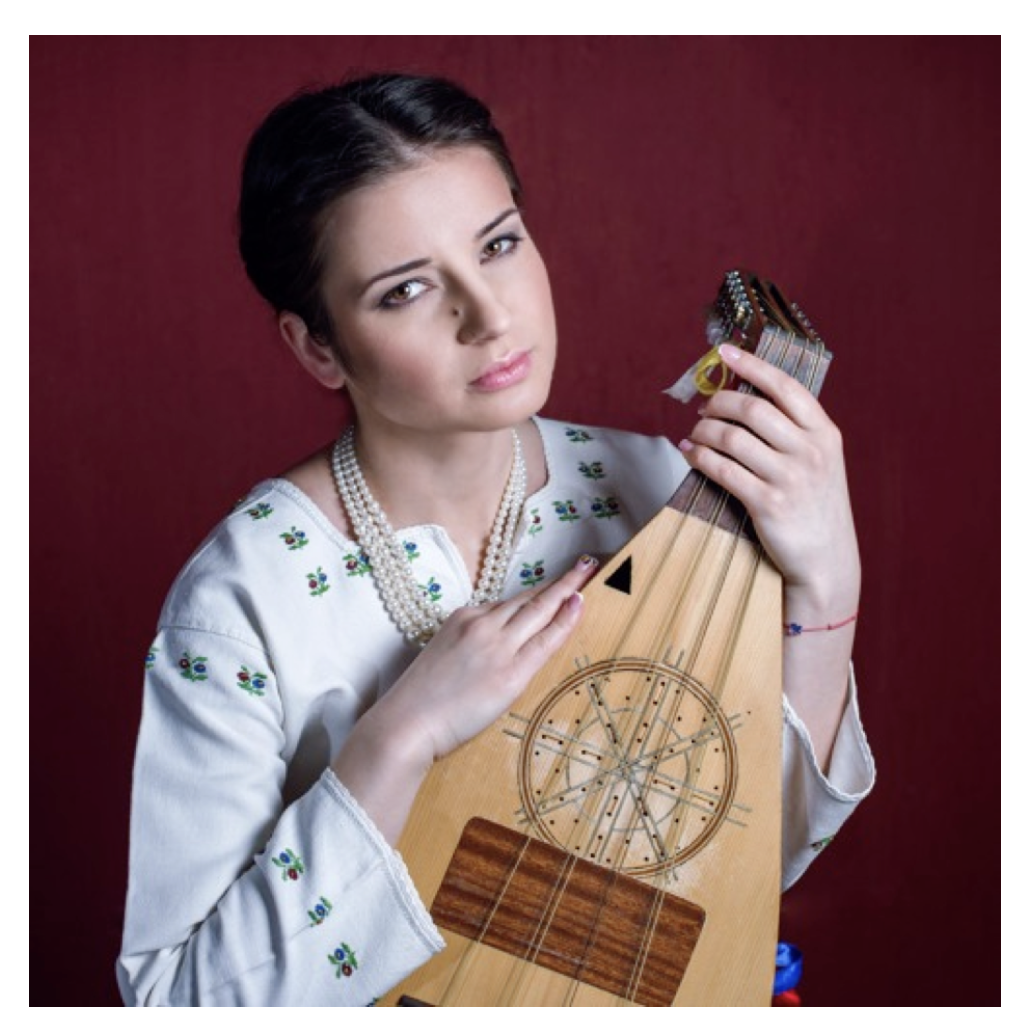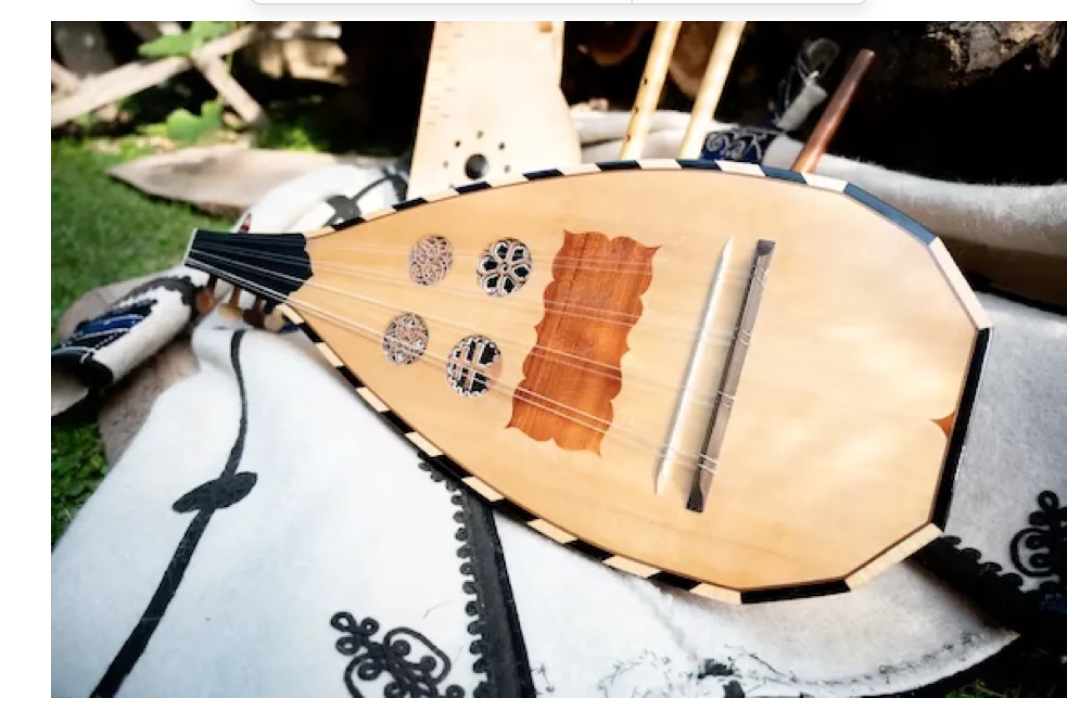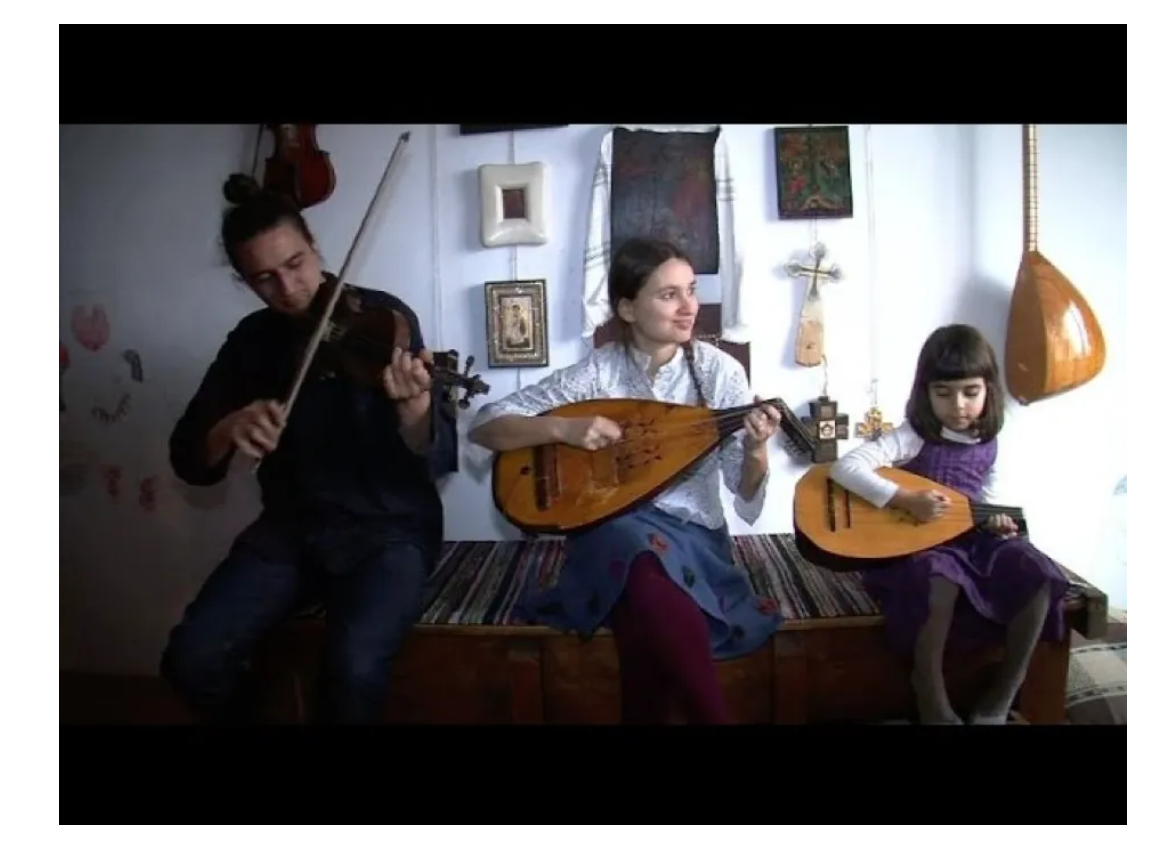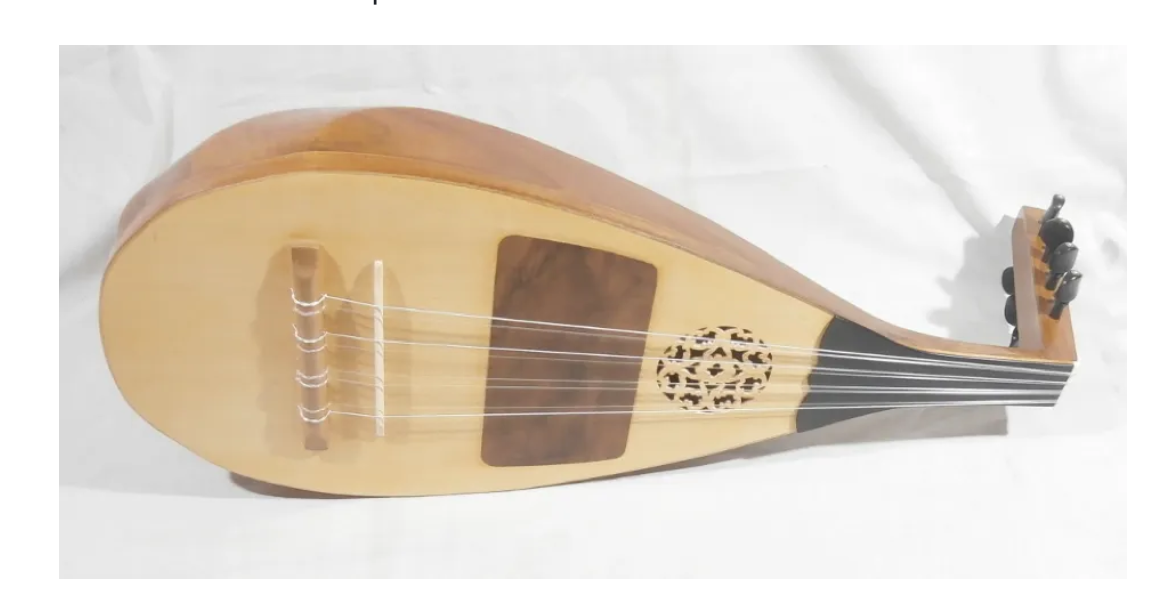Cobza, a multi-stringed instrument derived from the folk Lute family
The cobza (also cobsa, cobuz, koboz) is a multi-stringed instrument of the lute family of folk origin popular in the Romanian folklore from both Romania and Republic of Moldova (it is considered the oldest accompaniment instrument in the region). It is also used in the Hungarian Táncház movement (end of the 20th Century).

It is distinct from the Ukrainian Kobza, an instrument of different construction and origin.The Romanian Cobza is metal-strung (although modern nylon-strung models exist, mostly in Hungary), and has a very short neck without frets (although a newer fretted cobza can be found in the Republic of Moldova),with a bent-back pegbox. The back is ribbed. It is usually double or triple strung, and often has a characteristic flat end clasp.

Modern Cobza being played as an Oud, with a long thin plectrum.The Cobza is played with a plectrum (traditionally, a goose feather) in elaborate and florid melodic passagework, and has a pick-guard similar to that of an oud. Its strings are widely spaced at the bridge to facilitate this technique. It has a soft tone, most often tuned to D-A-D-G (although tuning depends on style, region and player).

The origins of the Romanian Cobza are thought to be a local adaptation of the Persian barbat or Turkish oud, probably brought to the area by itinerant Romani musicians in the 15th century (a Rom/Romani musician is called lăutar, literally lute-player). A Cobza player specifically is called a "cobzar". Notable Cobza players were Ion Păturică, Ion Zlotea, Marin Cotoanță, Grigore Kiazim (from Wallachia), Nicolae Păsnicuțu and Constantin Negel (from Moldavia).
It is said that the Cobza was also played in the 19th Century by Jewish musicians from Moldavia region. It seems that Cobza was also used in various music ensembles in the Bukovina region in the mid-war periods, being replaced totally by the mandolin and 4 stringed domra when the north of this area became incorporated into the Ukrainian SSR.The name of the instrument may come from the Turkic "kopuz".

Music creation experience combined with Songdio AI While making and playing the instrument, make some music with Songdio AI to add some fun to your musical life. Songdio AI is a platform that generates music through artificial intelligence, with simplified steps that make it easy for users to create unique music. Users can edit, personalize their work, and generate copyright-free music for different projects and videos, as well as publish it across platforms and receive full royalty revenue.
With Songdio AI, users can:
Discover music: Discover popular music, latest music and random songs that everyone is listening to in Songdio-AI music player to meet users’ needs for different types of music.
Create music: Create your own music with Songdio-AI music player, have fun creating music, and put your creative ideas into practice.
Recently played: Songdio-AI music player can record the user’s recently played songs, making it easy for users to review their favorite music at any time.
Private playlists: Users can create their favorite music playlists, categorize and bookmark according to different moods and scenes.